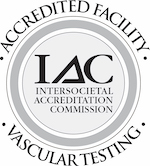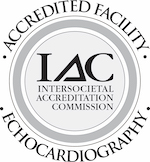Deep Vein Thrombosis (DVT)
Deep vein thrombosis, also known as DVT, is a dangerous blood clot in the veins that forms deep under the surface of the skin. Unlike superficial blood clots closer to the skin, DVTs occur in larger veins and can cause serious, even fatal, consequences such as a blockage of the blood vessels in the lungs – known as a pulmonary embolism.
DVTs, thankfully, are not very common in healthy people with low risk, however they can happen to anyone at any time and should be understood.
Causes and Risk Factors of DVT
Ultimately, any risk factors to slowed blood flow increases the risk of deep vein thrombosis. This is particularly true in the legs, where most DVTs occur. The primary causes and risk factors of DVT include:
- Poor lifestyle habits including smoking, limited exercise and poor diet that leads to excess weight and obesity
- Age and the consequent inelasticity of the venous walls as well as the greater potential for the breakdown of valves
- Dehydration
- Staying put for long periods of time, especially during travel on a train, bus, plane or automobile
- Genetic predisposition
- Pregnancy’s hormonal changes can cause a higher risk of blood clots
- Hormonal changes more generally, including at puberty and menopause, can also cause a higher risk of DVT, making the overall risk of DVT greater for women than men
Prevention of Deep Vein Thrombosis
The prevention of DVT can be achieved by limiting or eliminating the risk factors mentioned above. However, DVT is unpredictable and even seemingly low-risk and healthy patients may experience a blood clot. Some of the best preventative measures for DVT include:
- Staying active. Those who perform regular activity are often healthier than those who remain sedentary. Diet and exercise play a role here too. Activity improves cardiovascular health and delays the onset of many of the risks and causes of a DVT. Remember to stay well hydrated
- Prioritize movement when confined. Post-surgical patients as well as those traveling for long distances often remain seated or lying down for long periods of time. These patients should be getting up to walk around or at least performing lower leg (calf) muscle contraction activities as much as possible to avoid blood clot
- Taking a blood thinning medication prophylactically or taking supplements that act as anticoagulants should only be pursued under the direct supervision of your cardiologist. The benefits of taking such medications and supplements should be evaluated on a case-by-case basis
Age and genetics, which are both significant risk factors for DVT, are simply unpreventable. Therefore, older patients and those with inherent risk should be aware of their increased chance of a DVT and take the appropriate precautionary measures.
Treatment for Deep Vein Thrombosis
If a patient suspects deep vein thrombosis, they should see a qualified vein specialist such as those at Huntington Heart Center as soon as possible. It is important to avoid the potential complication of a pulmonary embolism, which can be fatal. Once the diagnosis of DVT is confirmed, there are a few possible treatment paths. Unlike a superficial vein blood clot, waiting to treat a DVT is not an option.
Anticoagulants
The first and most common line of defense is administering anti-clotting or clot busting medication. Clot busting medication is very effective in breaking up the clot and restoring proper blood flow. The dosage and duration of treatment recommended will vary based on patient. Patients will also be evaluated for a clotting disorder to see if there is an underlying, treatable cause of the DVT. However, not all patients respond well to anticoagulants and may require a more invasive procedure.
IVC Filter
Inferior vena cava or IVC filter placement is an option for patients who do not respond well to anticoagulant medication. Using a specially made catheter threaded up a vein from the groin, we are able to place a filter within the damaged vein. This filter physically blocks the clot from moving to the lungs. The filter can be left within the vein permanently or can be removed after a certain period of time. The filter simply stops a clot from moving to the lungs, but does not prevent future DVTs. Anticoagulant medication can be used in addition to the filter.
Ultimately, commonsense measures can go a long way toward preventing deep vein thrombosis. If DVT occurs, swift action in the form of a visit to your vein specialist or cardiologist can minimize the potential consequences. Should you experience a DVT, call your cardiologist immediately. Should you experience severe pain and shortness of breath, this is an emergency situation, potentially a pulmonary embolism, so dial 911 immediately.







